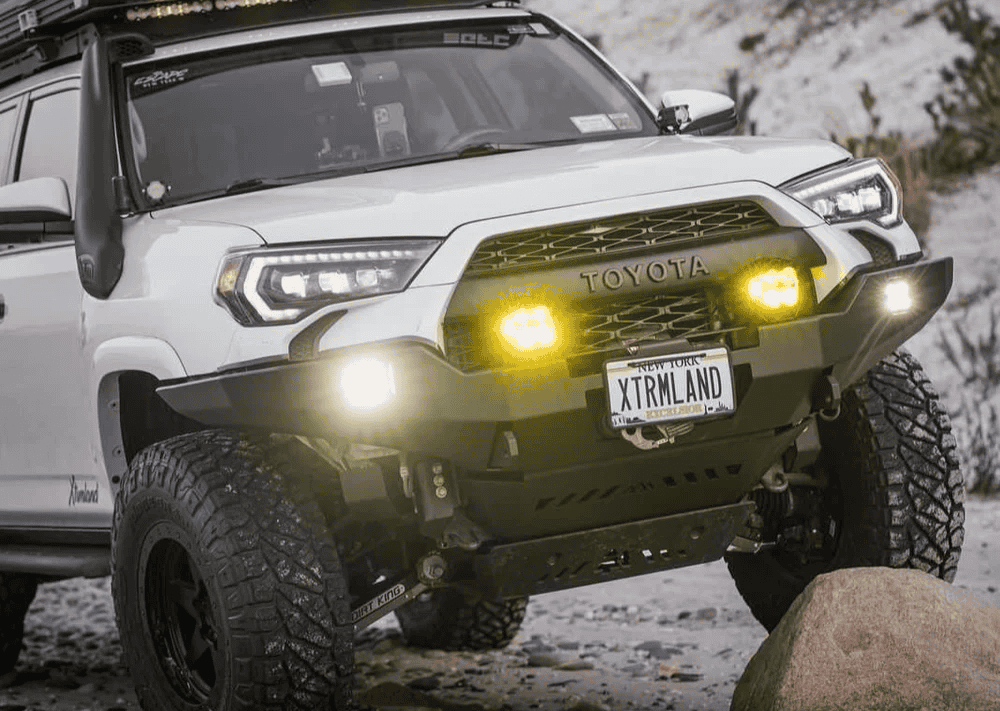Overland Vehicles

Gross Vehicle Mass describes the maximum legal weight of a vehicle when loaded. It includes the vehicle itself, passengers, cargo, fuel, accessories, and tow ball download if applicable. A GVM upgrade aims to legally increase that limit through engineered changes to suspension, axles, and related components, followed by certification that your region accepts. The goal is not just stiffer springs; it is a proven increase in load capacity that keeps handling predictable and braking safe. Done correctly, it is a system change supported by documentation.
Every vehicle leaves the factory with a weight rating created through testing and regulation. It is tied to chassis strength, axle capacity, brakes, tires, and stability. Exceeding that rating risks component failure, poor stopping distances, and insurance issues after a crash. A true upgrade considers each limitation in the chain and proves the result through engineering sign off and roadworthy checks. Think of it as upgrading the whole orchestra rather than just the drum section.
The right shop depends on your country and the stage of your build. In Australia and New Zealand, look for approved networks that supply tested kits with engineer certification, a new compliance plate, and state recognition. These providers handle pre registration upgrades on new vehicles and post registration upgrades for in service rigs. Typical work includes uprated springs, dampers, bushings, helper systems, revised bump stops, and often tire load rating checks. Many also verify rear axle loads, tow ball limits, and stability with added gear like long range tanks or canopies.
In North America, the term you will hear is GVWR rather than GVM. Changing the factory rating is uncommon, but certified upfitters can increase practical payload through engineered suspension and axle changes when supported by documentation that aligns with federal and state rules. On certain platforms, manufacturer recognized upfit programs or qualified engineering reviews may apply. Regardless of region, choose a provider that puts compliance, testing, and documentation first, not just taller springs.
Common pathways include visiting an approved suspension specialist that fits a tested package and arranges an engineer inspection. For new vehicles, pre registration upgrades get the higher rating recorded from day one. For used vehicles, post registration upgrades add a compliance plate and updated paperwork. Expect a focus on axle load balance, brake performance, and tire load indices. Reputable providers will also weigh the vehicle and coach you on payload calculations.
Before booking, ask how the shop certifies the upgrade and which authority recognizes it. Confirm whether the process updates registration records, whether you receive a compliance plate or certificate, and if insurance providers accept the change. Discuss warranty implications for new vehicles and component warranties for suspension and axle parts. Good shops will outline how the change affects towing, especially tow ball mass, gross combination limits, and trailer brake requirements.
If you are in the United States, start by weighing your vehicle and auditing your real world load. A responsible shop will propose upgrades that improve payload management within the legal framework for your platform. They will also clarify what documentation exists and what does not, since changing the labeled rating is limited. The emphasis becomes proper springs, shocks, bump stops, and helper systems paired with braking and tire selection that supports your actual use, like long highway runs, rough forest roads, or towing a small camper.
Practical steps to prepare include:
What should you expect on the day
If your build includes roof tents, long range tanks, recovery gear, or interior cabinetry, plan your upgrade early so spring rates and shock valving match the final curb weight. Upgrading before loading a rig often leads to multiple re springs and poor ride quality. A short discovery call with a qualified shop can prevent that frustration.
When your travel plan includes remote tracks or loaded towing, you will benefit from a systems approach. That means thinking beyond springs to include bump stops that control bottoming, shocks that manage heat, and brake maintenance that keeps pedal feel consistent. Tires matter too, since a higher load index and proper pressure support the whole package.
If you want a shop that understands heavy builds end to end, explore our overland focused work and how we integrate suspension, electrical, storage, and recovery planning. See Overland rigs for examples and platform guidance. For tailored suspension and load solutions, our Custom overland upfit approach pairs the right components with engineering minded checks. Curious about the experience and outcomes our clients report? Visit Why choose OZK Customs to see how we build for real world use.
Travel farther with confidence by booking a conversation about your platform, axle loads, and target payload. We will weigh the options with you, outline paths for certification or documentation, and design a suspension system that stays composed with full gear on board. Tell us where you are headed and what you carry, and we will map the upgrade that keeps you legal, stable, and relaxed behind the wheel.
Ready to stop juggling payload and start traveling confidently? Our team builds and certifies heavy duty solutions that balance suspension, braking, and real world load needs. Share your platform and target payload, and we will map a path from assessment to handoff with documentation in place.
ADDRESS:
6159 E Huntsville Rd, Fayetteville, AR 72701
PHONE:
(479) 326-9200
EMAIL:
info@ozkvans.com